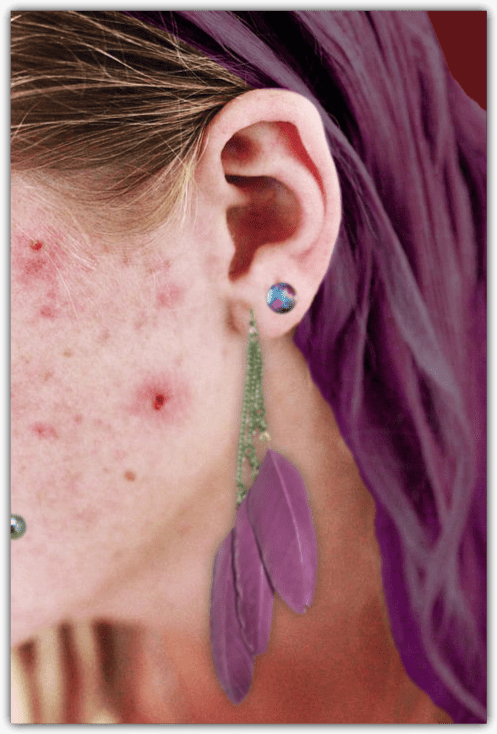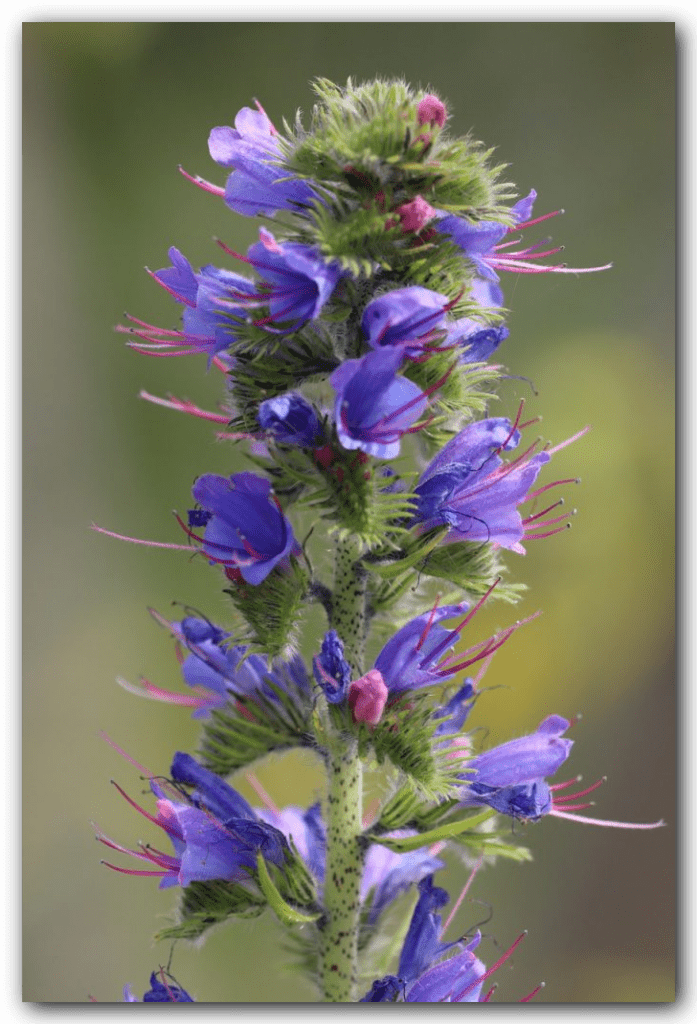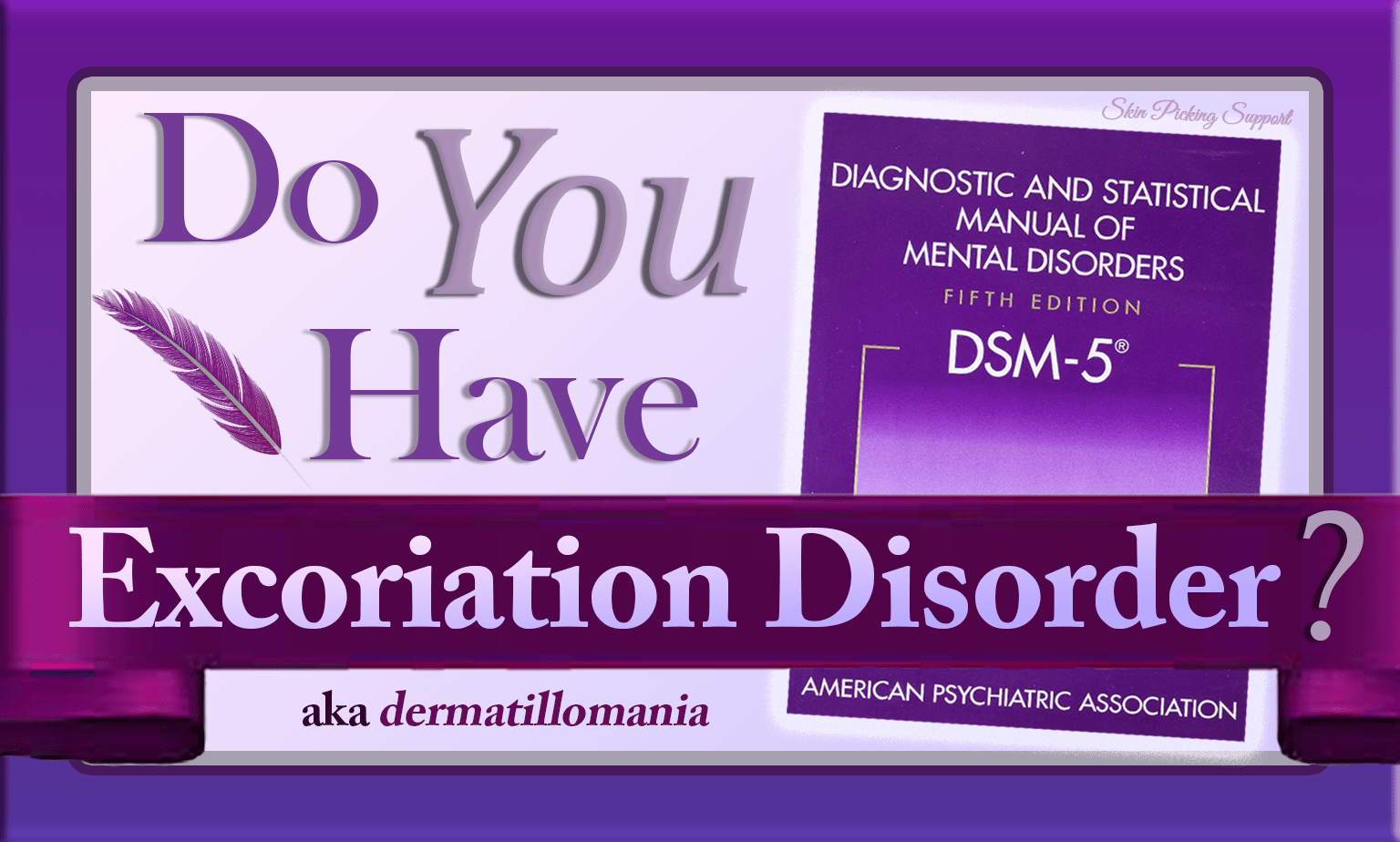When learning about the existence of dermatillomania, many people begin to worry if they, too, have this disorder because they pick their skin. How do you know if you have a compulsion or pesky “habit”? When does picking your skin become a disorder?
Questions to Consider…
Do you pick at your skin enough to cause emotional distress?
Does your skin picking prevent you from engaging in social activities?
Do you feel that you are being held back in life because of your picking?
Do you keep your obsessive skin picking a secret for fear of judgment?
Do you feel ashamed that you are unable to stop picking at your skin?
Does this make you feel alone?

Released in May of 2013, the Diagnostic and Statistical Manual of Mental Disorders (DSM-5) officially lists dermatillomania as excoriation disorder, under the Obsessive-Compulsive and Related Disorders category.

Diagnostic Criteria:
Recurrent skin picking that results in skin lesions
Repeated attempts to stop the behavior
The symptoms cause clinically significant distress or impairment
The symptoms are not caused by a medical or skin condition, or a substance
The symptoms are not better explained by another psychiatric disorder
Karen Pickett*, LMFT, outlines an easier way to classify excoriation disorder in an article published by OCD of LA, ABC’s of Dermatillomania. Further simplifying it:
“A”
something that nearly “Anyone” would pick at.
“B”
is a “Bump”, pimple, scab, etc. that only a skin picker would pick.
“C”
stands for “Create“, where a picker creates more marks.
* Fun Fact: Karen treated Angela Hartlin after they appeared on The Doctors together in 2015.
Please visit a trained professional if you believe your skin picking is interfering with your day-to-day activities and causing emotional distress. Additional testing may need to be done to determine if your skin picking is exacerbated by a skin disorder, or another psychological condition.
